Different Types of Engines: Evolution of Engines
An engine is a thermodynamic machine that is designed to change multiple forms of chemical energy into mechanical energy. The most common form of engine is the mechanical heat energy engine where the heat generated from the combustion of fuels is converted into mechanical energy via a combination of levers.
Published March 20, 2024

The history of engines go way back, but the first engine that powered the industrial revolution is the steam engine and the first fossil fuel used for the generation of power is coal. The first commercially successful gasoline-powered engine was developed by Nicolas Otto and Eugen Langen.
Nicolas Otto is considered as one of the pioneers in the field of engineering. The heat engine works on the same principle and it basically is associated with a series of different parts like the transmission, transfer case, and differential. There are various kinds of engines which are listed below.
- Thermal Engines
- Electrical Engines
Thermal Engine: The thermal engines works on the principle of thermodynamics where chemical energy is taken into a volatile state by oxidising the fuel by mixing it with oxygen and then that volatile state produces power which is transferred to the wheels through a combination of various levers.
There are basically Three types of thermal engines:
- External combustion engines: These engines powered the industrial revolution. This is one of the oldest forms of engine in which the combustion of the fuel occurs in a separate place which generates heat. Later that heat is channelized to produce mechanical energy. The Steam Engine is the best example of this engine where the coal is burned in a separate tank and the heat generated is used to heat water which in turn generates steam which generates mechanical energy by turning the wheels.
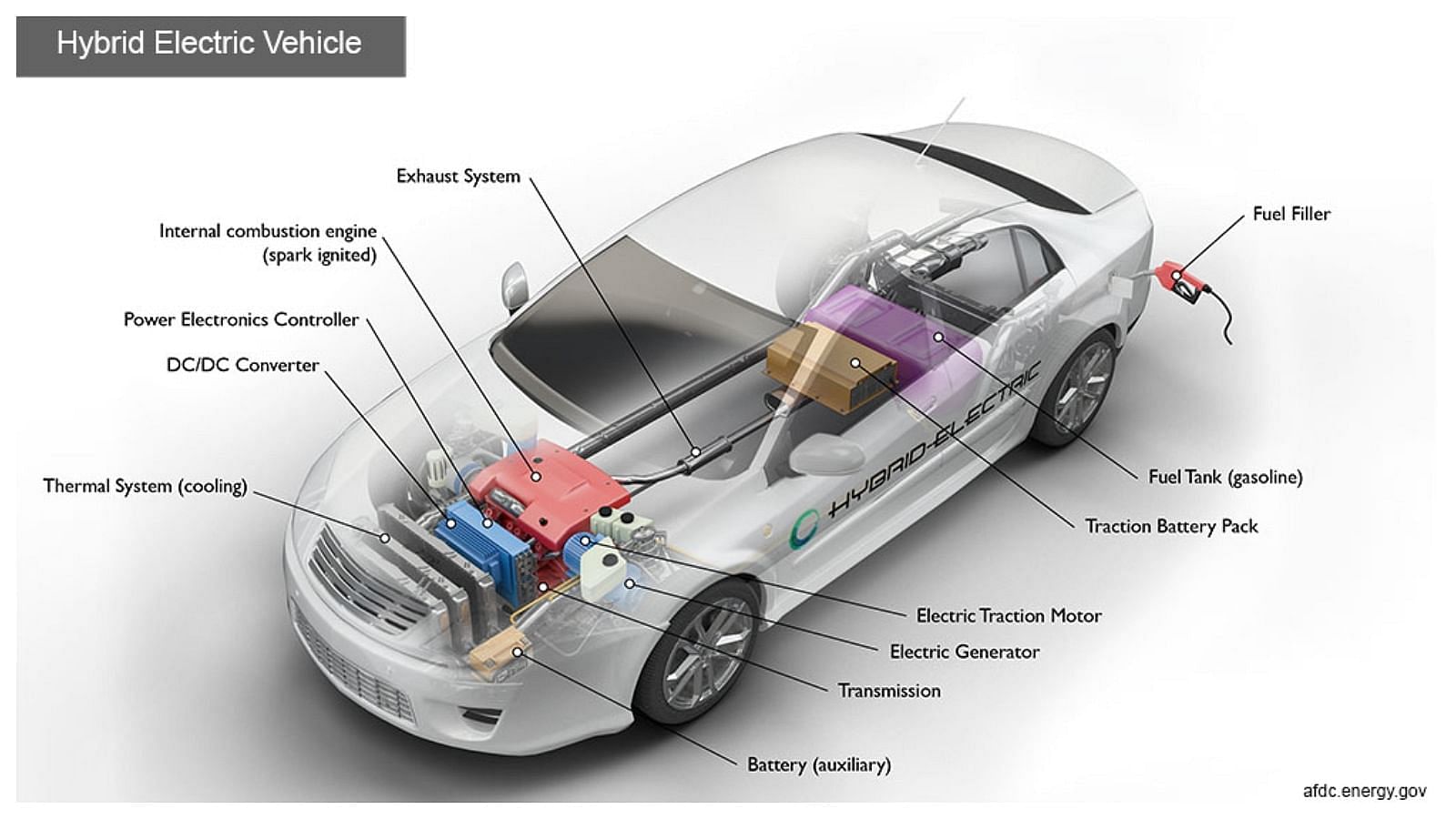
- Reaction Engines: These kinds of engines are mostly seen on jet planes, which work on the principal of newton’s third law, stating that for every action there is an equal and opposite reaction. The principle is simple that, push large amount of air from the back of the engine to move forward. This is achieved my moving a turbine that has numerous blades in it which sucks in large amount of air through a broad opening and lets it out through a narrow opening after compression, combustion and the successively exhaust as a result generating an enormous amount of thrust.
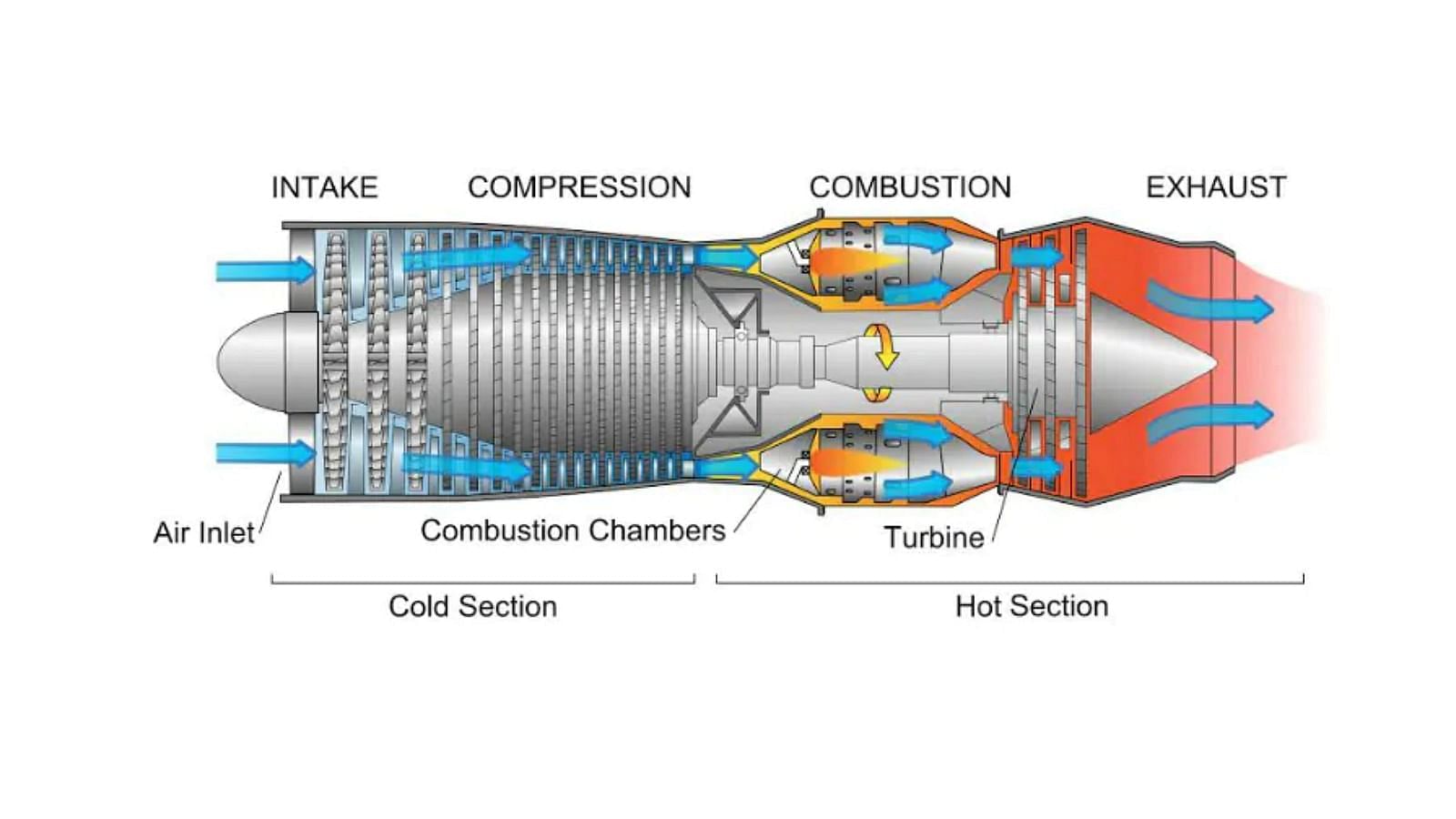
- Internal combustion engines: The internal combustion is the most common for of engine that is widely used in the world of automobiles. There are various classifications of internal combustion based on different parameters. The difference between an internal combustion and an external combustion engine is that in an internal combustion engine the fuel is generally in liquid form or gaseous state and in another is combustion takes place inside the cylinder. It is one of the most efficient engines because of the fact that the moment a combustion happens a piston is moved downwards the chemical energy is instantly converted into mechanical energy. This system is quite reliable as well and work in extreme weather conditions.
Internal combustion based on the number of strokes:
- Two Stroke engine: In this kind of engine when the combustion happens the piston moves up and down only one time and the entire power cycle is completed within that.
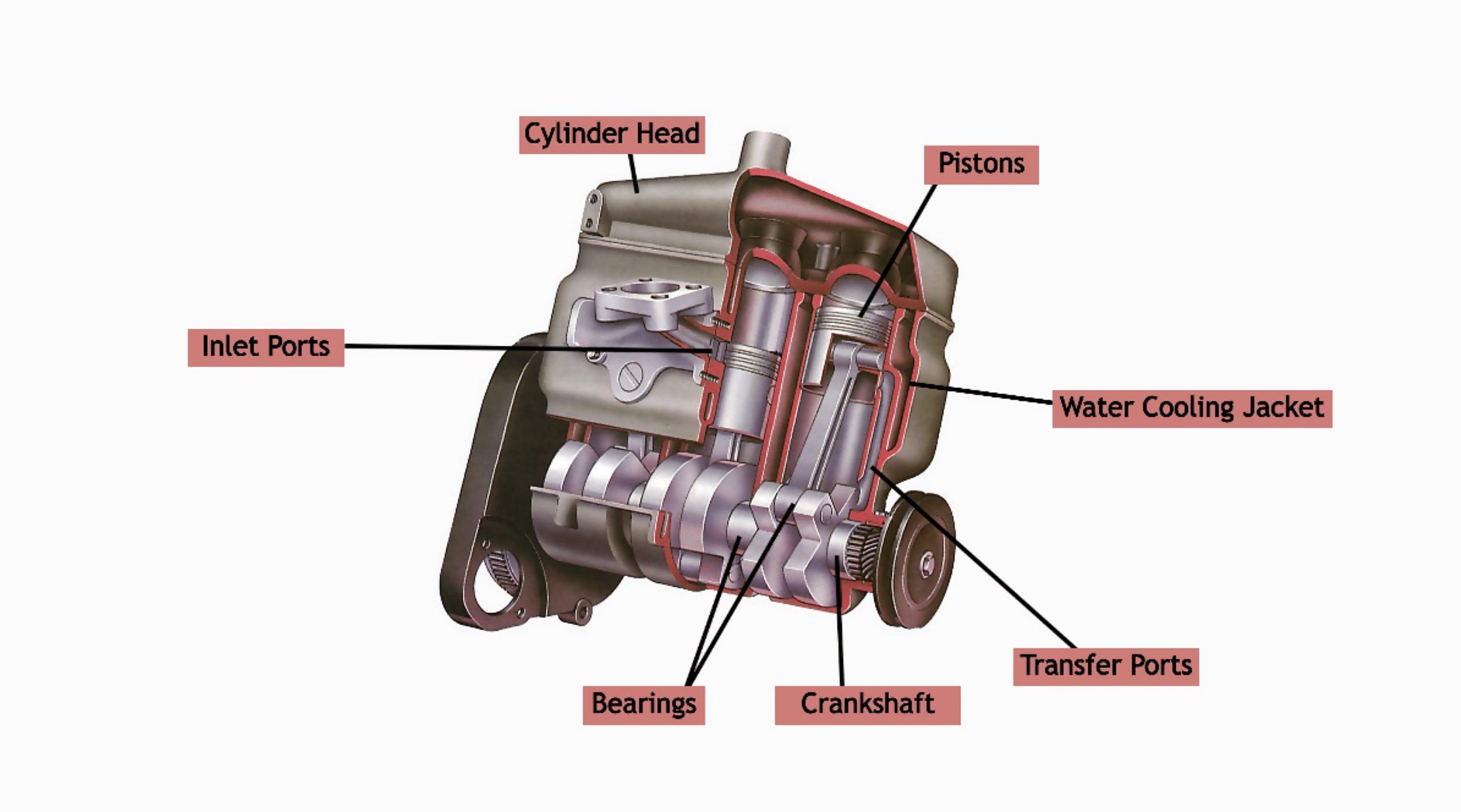
- Four Stroke Engine: In a four stroke engine for a single combustion the piston goes up and down two times each as a result to in a four stroke engine to complete the power cycle two up and down movement are required.
Internal Combustion engine based on the type of fuel:
- Diesel Engine: In this engine the air is compressed before the fuel is sent into the chamber for combustion, as a result spontaneous combustion happens as the temperature of the compressed air is already quite high.
- Gasoline Engine: In this type of engine first the gasoline and air are mixed and then they are compressed to make volatile. After this a spark plug ignites and combustion happens.
Internal combustion engines can be classified on the basis of the arrangement of cylinder as over the years many types of engine has developed:
- INLINE or Vertical or Straight Engine : In vertical engine cylinders are placed vertically in a straight line along the crank shaft. In general there are three versions of this engine one is known as an Inline three-cylinder engine which has got three pistons, then comes the most popular Inline four-cylinder engine which has got four pistons, and the Inline six-cylinder engine which has got six cylinders. These engines are lightweight, compact, and easy-to-fix engines, however, they are quite delicate as well.

- V Type Engine: In a V type engine, the cylinders are placed in two banks having some angle between them. The angle between the two banks is kept as small as possible to prevent vibration and balancing problems. These types of engines are the most common engines in American cars. There are various versions of it namely V6, V8, V10, and V12 engines. The V10 is the most notorious among them due to being significantly more prone to vibrations, V6 and V8 are the most common ones. The V-type of engines are rugged but they are expensive to maintain.
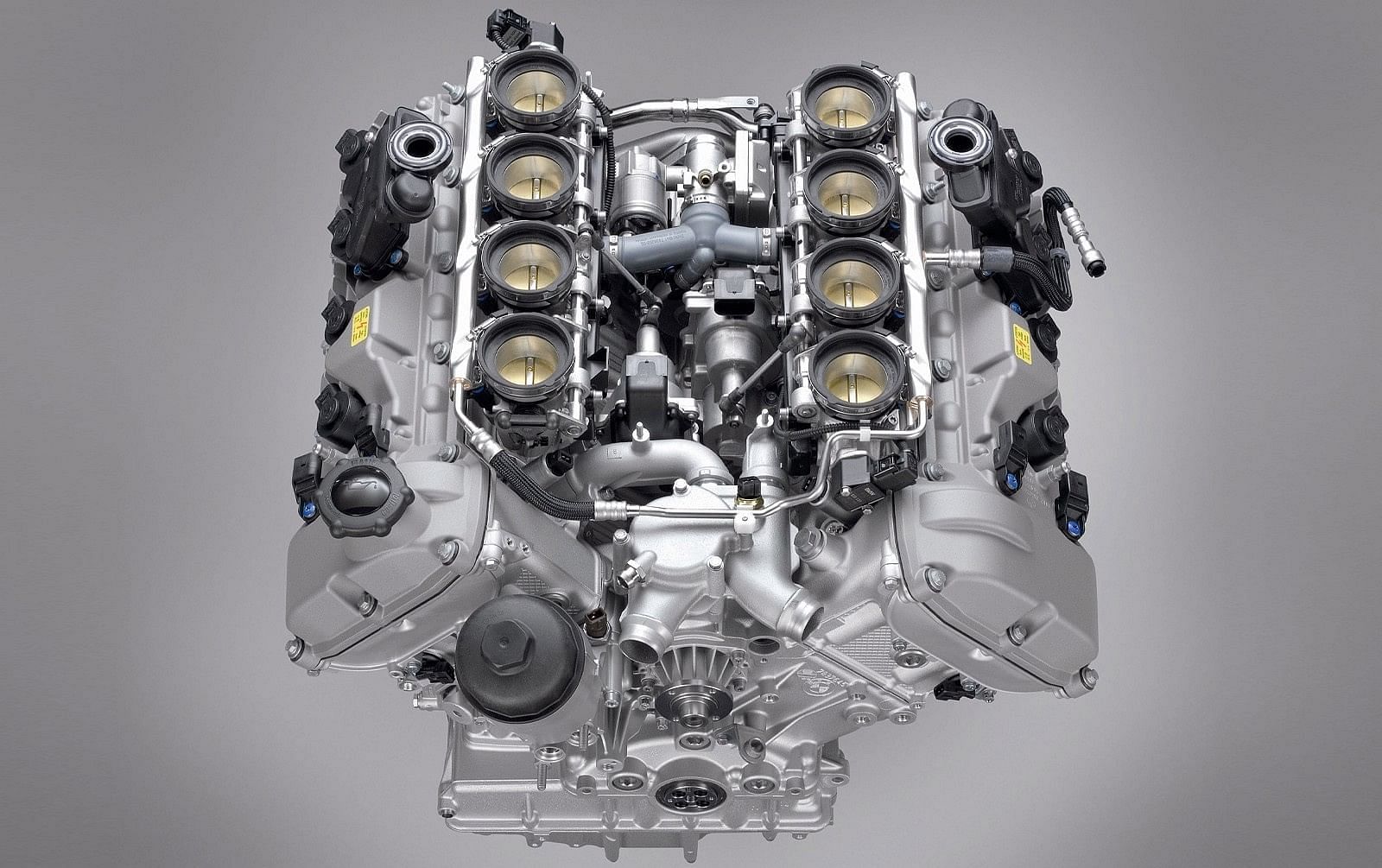
- W Type Engine: In W-type engines, the cylinders are arranged in three rows such that it forms W-type arrangement. W-type engine is made when 12-cylinder and 16-cylinder engines are produced. This type of engine is compact but due to the use of a lot of components, they are notoriously difficult to work on. These engines are generally seen in high-end cars like Bugatti Veyron.

- BOXER OR H TYPE Engine: The Boxer or H engine is so called because the movement of the engine's pistons resembles the direction of a boxer's fists in the horizontal plane. The angle between the cylinders is 180 degrees. These engines are widely used in higher motorcycles and luxury sports cars. It is the choice of engine for a Porsche Boxster and Subaru Impreza. These engines are quite big in size and quite complicated as well to work on.
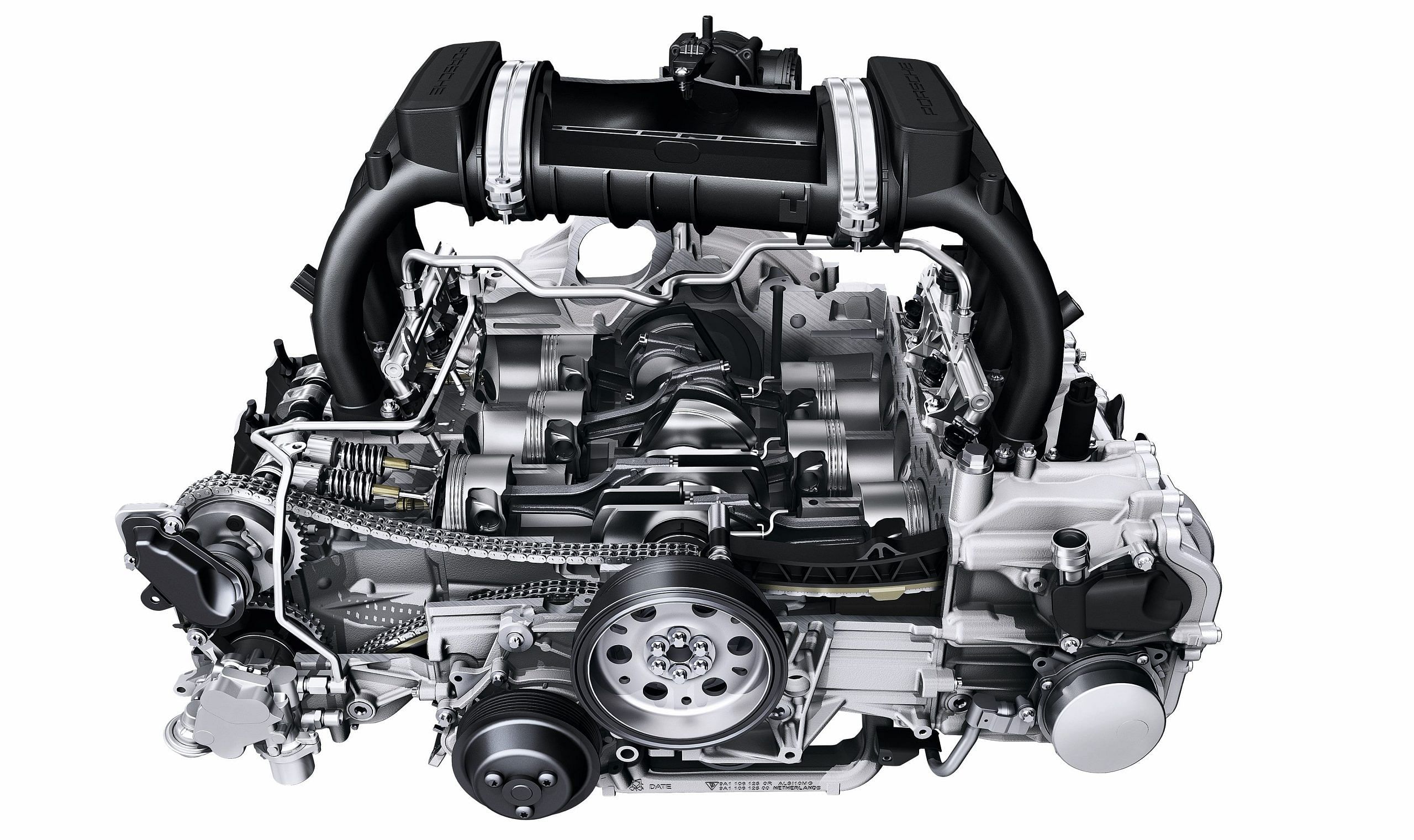
- ROTARY Engine: In a piston engine, the cylinder alternately does four different jobs -- intake, compression, combustion and exhaust. A rotary engine does these same four jobs, but each one happens in its own part of the housing. It's kind of like having a dedicated cylinder for each of the four jobs, with the piston moving continually from one to the next. The rotary engine (originally conceived and developed by Dr. Felix Wankel) is sometimes called a Wankel engine, or Wankel rotary engine. Mazda RX-7 and RX-8 use rotary engines.
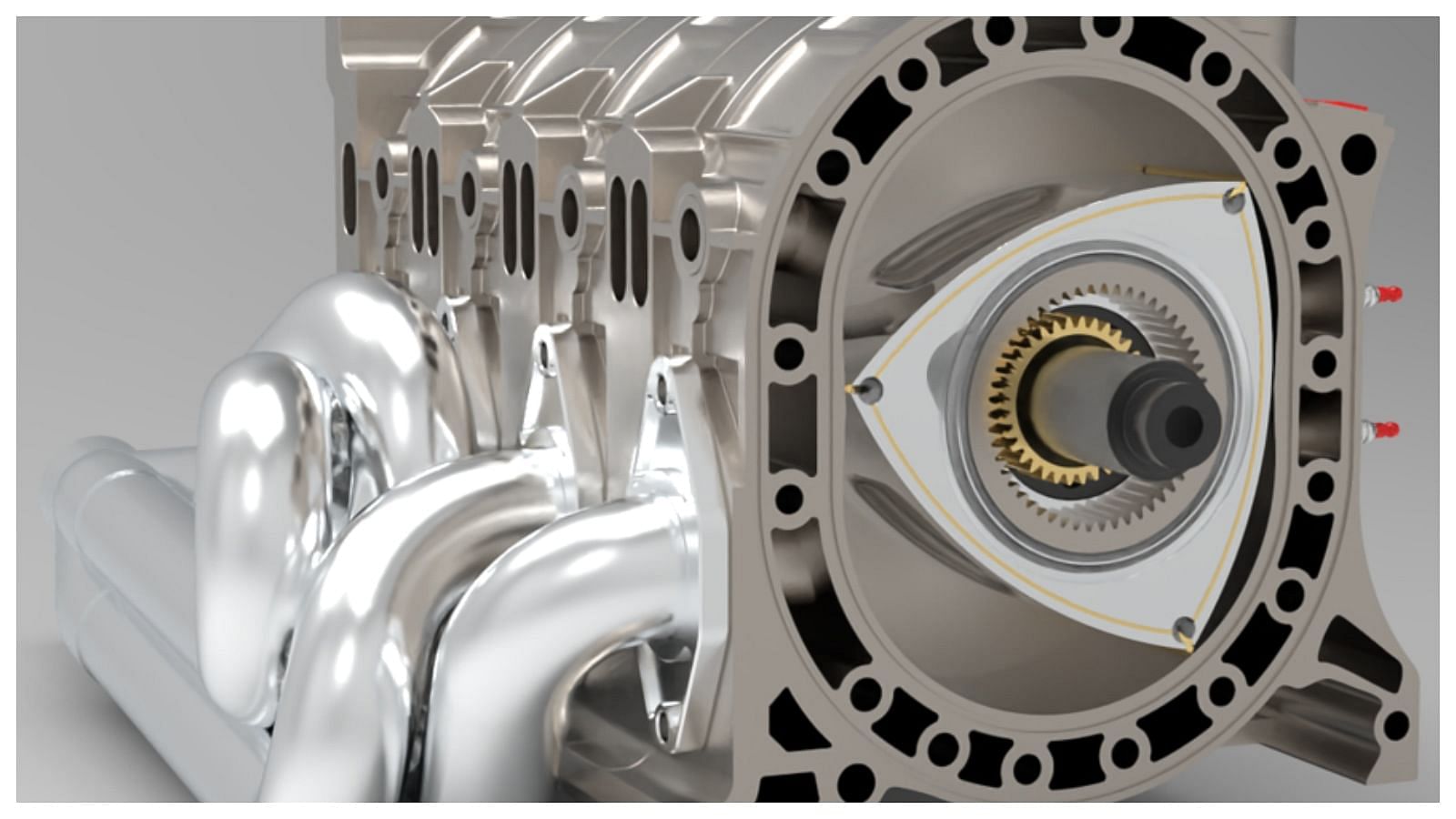
- HYBRID ENGINES VEHICLES: Hybrid electric vehicles are powered by an internal combustion engine and one or more electric motors, which use energy stored in batteries. A hybrid electric vehicle cannot be plugged in to charge the battery. Instead, the battery is charged through regenerative braking and by the internal combustion engine.

Electrical Engines: Electric motors are responsible for the conversion of electrical energy into mechanical energy. This is the crux of the functioning of electric vehicles. There are two parts of electric vehicle motors irrespective of their type.
- The stationary outer shell is known as the stator
- The moving part is known as the Rotor, which feeds the torque to the transmission, which passes it down to the differential and then to the wheels.
Most of EVs have a direct drive to transfer the power from the motor to the wheels which means there are no gears as such. All electric vehicles use three-phase alternating current to create a rotating magnetic field.

Electric vehicles also include a DC-AC inverter to provide AC current from the DC current stored in the battery to create a variable electromagnetic field. Electric motors also act as generators while braking, thereby regenerating the energy. There are three types of motors available:
- Asynchronous induction motor.
- Synchronous permanent magnet motor.
- Synchronous current excited motors.
The Asynchronous induction motor is there for some time now, while both the synchronous motors are relatively new.
Write a comment
Comments
No Comments Yet









